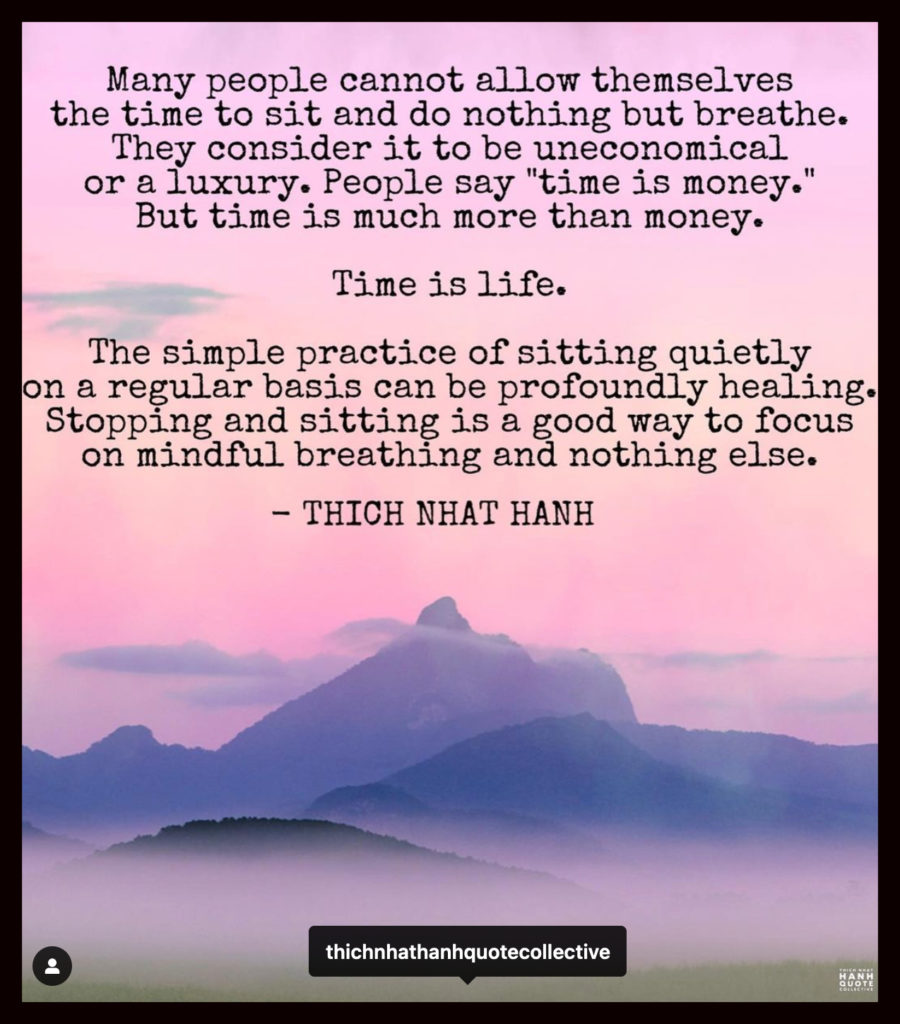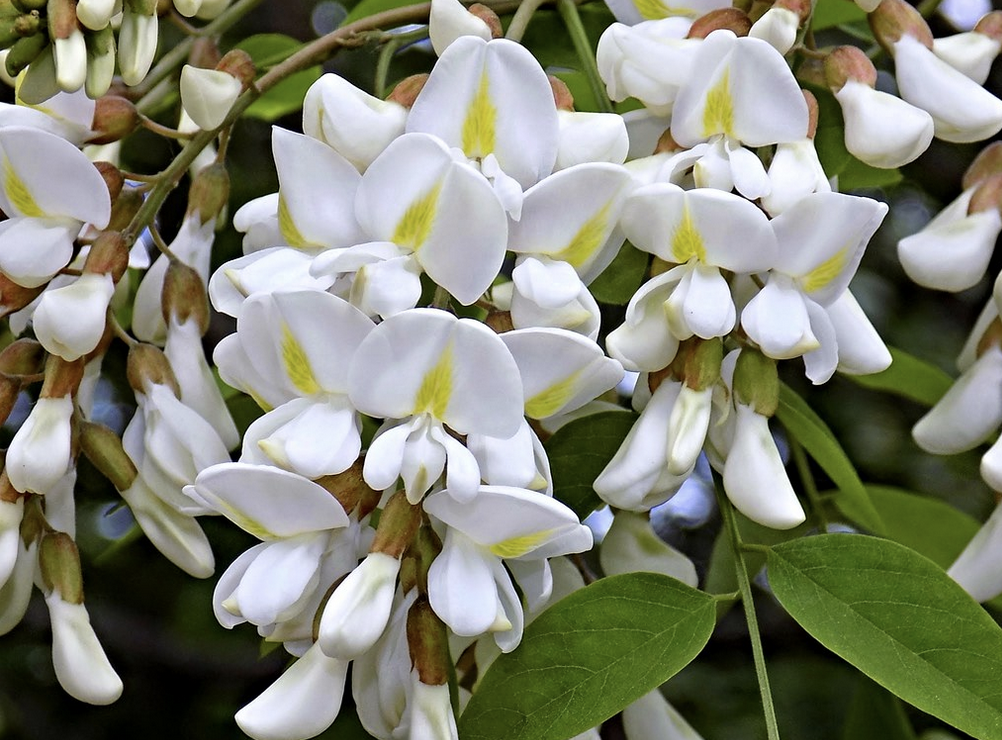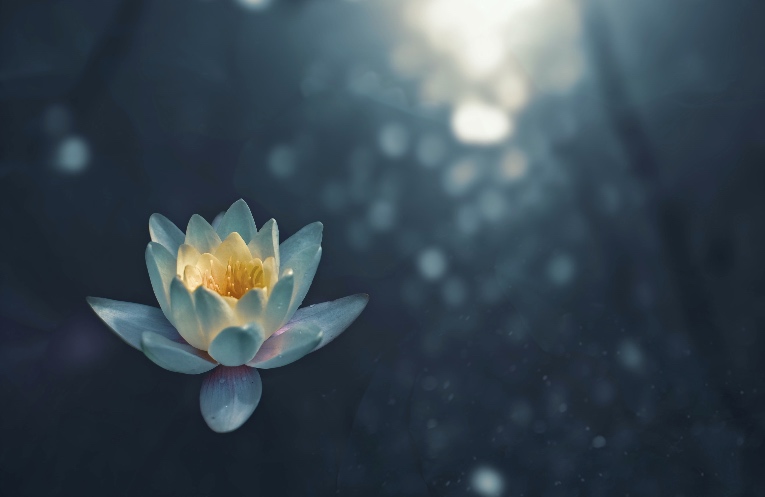
“I follow four dictates: face it, accept it, deal with it, let it go.”
~ Chan Master Sheng Yen


“I follow four dictates: face it, accept it, deal with it, let it go.”
~ Chan Master Sheng Yen

“Many people cannot allow themselves the time to sit and do nothing but breathe. They consider it uneconomical or a luxury. People say ‘time is money.’ But time is much more than money.
Time is life.
The simple practice of sitting quietly on a regular basis can be profoundly healing. Stopping and sitting is a good way to focus on mindful breathing and nothing else.”

Few people see the acacia blossoms fall,
Night is quiet, the spring mountain empty.
The sudden moon alarms mountain birds.
Long moment of song in the spring ravine.
~ Wang Wei (699-759)
UPDATE: Bhante Gunaratana will resume his hour-long ZOOM guided meditations and Dhamma talks from 10 to 11 a.m. on most Saturdays and Sundays starting Saturday, March 19, 2022.
We do hope you continue keeping up with your meditation and mindfulness practice. We highly encourage folks to check out the free 10 to 11 a.m. meditations, Dhamma talks and Q-and-A sessions hosted most every Saturday and Sunday by Bhante Gunaratana (Bhante G), abbot of the Bhavana Society, a Theravadan Buddhist Monastery and retreat center in High View WV. They resume after his winter retreat ends, starting 10 a.m., Saturday, March 19, 2022.These offer a priceless way to deepen your practice along with one of the world’s most esteemed Buddhist teachers, meditation guides, and Buddhist scholars. If you cannot make those hours, the sessions are recorded and posted to Bhavana’s website for you to access at your leisure.
TO ATTEND BHANTE G’s ZOOM SESSIONS: Arrive a few minutes before 10 a.m. on Saturdays and Sundays at the ZOOM link below. Type in the password ‘metta’ (a Pali word that signifies ‘loving-friendliness’). On Saturday, the half-hour guided meditation is followed by a talk on Buddhist teachings. On Sundays, people in the session can ask questions on spiritual practice directly of Bhante G.)
LOG-IN ZOOM SITE: Log into the meeting at this link a few minutes before 10 a.m. on most Saturdays and Sundays. PASSWORD: metta
TO VIEW THE MANY RECORDED SESSIONS of these guided meditations and talks, visit the Bhavana Society’s YouTube page for an archive of them. The page is regularly updated with new recordings.
LINK to BHAVANA YOUTUBE: BhavanasocietyOrg/videos


“Maranenapi tam pahiyati
yam puriso mamidanti mannati.
Etampi viditva pandito,
na mamattaya
nametha mamako.
“At death, a person abandons
what one construes as mine.
Realizing this, the wise
shouldn’t incline
to be devoted to mine.”
~ The Buddha from the Sutta Nipata, 4:812
(translated from the Pali by Thanissaro Bhikkhu)
As lovely as lovely gets. The resident community at Plum Village, founded by Thich Nhat Hanh in Plum Village, France, just released this stirring recording of the Namo’valokiteshvaraya chant of compassion (recorded in autumn 2020), in honor of the passing of their world-beloved teacher. It’s a 22-minute musical meditation, with weaving voices, violin and percussion.

NOTE: This article originally appeared in the Jan. 24, 2022 issue of Tricycle.com
In the old photograph, Thich Nhat Hanh gazes kindly in the direction of the camera. In the foreground, the back of a person in a blue sweater with white markings is visible. Thay—a word pronounced ‘tie’ that means “teacher” and how students affectionately addressed Thich Nhat Hanh—looks my way. I’m in the sweater, holding a microphone, about to sing a cappella the ethereal tune “Appalachian Round.”
It is September 1993 and it is a curious thing to be serenading one of Earth’s leading Buddhist teachers of mindfulness and “engaged Buddhism”—his term for walking the talk of spiritual training in daily and worldly life. The better part of a hundred of us have come to a West Virginia retreat led by the world-renowned Vietnamese Buddhist guide.
The silent event, with twice-daily talks by Thay, unfolded at Claymont Court near Charles Town, West Virginia, a sprawling estate once home to George Washington’s grand-nephew. It’s a trifecta of oddball confluences: a Zen Buddhist icon leading silent people in walking and sitting meditation in the West Virginia hills, at Bushrod Washington’s stately old stomping grounds.

I’ll leave to others detailed homages to the remarkable swath Thich Nhat Hanh cut through his notable life. (I recommend Tricycle’s obituary by Joan Duncan Oliver.) I wish only to cast a few rose petals from Appalachia in his wake as we mark his leavetaking.
I had no intention of singing that day. Yet as we gathered beneath sheltering trees, with anthropologist and now Upaya Zen Center abbot Joan Halifax at Thay’s side, a microphone appeared. He asked us to share something. The first thing that seemed appropriate in my head—a song I had just begun singing publicly with a trio—came out.
There was this open-door quality to Thay’s teachings that seemed to welcome such spontaneity. There was also a whole lot of silence once the microphones flicked off. The combination could affect the direction of your daily life.

“That was a relief for me. No need for chit-chat, just the calming silence,” says my friend, Yvonne Farley, who also attended. “That retreat was ‘it’ for my spiritual life. The teachings have stayed with me. That retreat changed my inner life.”
What do we recall from epochal encounters in our spiritual journeying? Little things, often. For Yvonne, it was planters full of red geraniums in the great octagonal Claymont Court barn, where we gathered daily for dharma talks and quiet meditation.
“I got genuine insight there,” says my friend. “A revelation of the power of the moment. And, thus, those red geraniums. It was amazing to me that he conveyed an experience like that.”
I recall sitting on a cushion in the same large space. So many bodies, so many breaths in and out. Thay had a great old bell, big as a footstool, etched with inscriptions. He tapped it and it was so resonant it reverberated for minutes.
There was this open-door quality to Thay’s teachings that seemed to welcome such spontaneity.
As the bell fell quiet that Sunday morning, I heard an approaching sound. Above the roof, out of sight but clear as the ring of that bell, an arrow-line of Canadian geese came honking across the sky.
Then they were gone.
These 30-odd years later, when Canadian geese traverse the skies in my corner of West Virginia—which they do a lot—the sound stirs some of the deep peace of that moment in the presence of Thich Nhat Hanh.
Here’s one last petal of small yet big things he left behind in these hills.
Routinely, but randomly, a bell ringer would appear during the retreat workshops or during our silent meals. The bell ringer would hold up a small, resonant bell, tap it, and then, as Thay instructed, we’d let go of whatever grand important thoughts we were thinking. Dropping them to attend completely to the bell’s reverberations in the room.
Until silence returned.
Ken Lewis, another friend who came to that retreat, told me about teaching a meditation course in rural Roane County, West Virginia, last week, when the world learned of Thich Nhat Hanh’s death.
“I was telling them about the mindfulness bell that was used at that retreat,” he said.
Meditative geese calling in the sky and mindfulness bells rung in the Appalachian hills.
Thank you, Thay. Peace.

Do not say that I’ll depart tomorrow
because even today I still arrive.
Look deeply: I arrive in every second
to be a bud on a spring branch,
to be a tiny bird, with wings still fragile,
learning to sing in my new nest,
to be a caterpillar in the heart of a flower,
to be a jewel hiding itself in a stone.
I still arrive, in order to laugh and to cry,
in order to fear and to hope.
The rhythm of my heart is the birth and
death of all that are alive.
I am the mayfly metamorphosing on the surface of the river,
and I am the bird which, when spring comes, arrives in time
to eat the mayfly.
I am the frog swimming happily in the clear pond,
and I am also the grass-snake who, approaching in silence,
feeds itself on the frog.
I am the child in Uganda, all skin and bones,
my legs as thin as bamboo sticks,
and I am the arms merchant, selling deadly weapons to Uganda.
I am the twelve-year-old girl, refugee on a small boat,
who throws herself into the ocean after being raped by a sea pirate,
and I am the pirate, my heart not yet capable of seeing and loving.
I am a member of the politburo, with plenty of power in my hands,
and I am the man who has to pay his “debt of blood” to, my people,
dying slowly in a forced labor camp.
My joy is like spring, so warm it makes flowers bloom in all walks of life.
My pain is like a river of tears, so full it fills the four oceans.
Please call me by my true names,
so I can hear all my cries and laughs at once,
so I can see that my joy and pain are one.
Please call me by my true names,
so I can wake up,
and so the door of my heart can be left open,
the door of compassion.
~ SOURCE: From this site
Below is an excerpt from a talk given by Thich Nhat Hanh at Plum Village in France on August 6, 1998:
TODAY I WOULD LIKE TO SPEAK A LITTLE BIT about Heaven, or Paradise, and Hell.
I have been in Paradise, and I have been in Hell also, so I have some experience to share with you. I think if you remember well, you know that you have also been in Paradise, and you have also been in Hell. Hell is hot, and it is difficult.
The Buddha, in one of his former lives, was in Hell. Before he became a Buddha he had suffered a lot in many lives. He made a lot of mistakes, like all of us. He made himself suffer, and he made people around him suffer. Sometimes he made very big mistakes, and that is why in one of his previous lives he was in Hell.
There is a collection of stories about the lives of the Buddha, and there are many hundreds of stories like that. These stories are collected under the title ‘Jataka Tales.’ Among these hundreds of stories, I remember one very vividly. I was seven years old, very young, and I read that story about the Buddha, and I was very shocked. But I did not fully understand that story.
The Buddha was in Hell because he had done something wrong, extremely wrong, that caused a lot of suffering to himself and to others. That is why he found himself in Hell. In that life of his, he hit the bottom of suffering, because that Hell was the worst of all Hells.
Continue reading
Meditation Circle members are invited to check out Bhante Gunaratana’s YouTube videos where he teaches the Mangala Sutta to young children. There is also a live Zoom session available if member’s children would wish to join.
From the Bhavana Society website:

* The Mangala Sutta is a discourse by the Buddha on the subject of ‘blessings’ (mangala). In this discourse, the Buddha describes those qualities that are conducive to happiness and prosperity.
Do not be concerned with who is
wise and who is stupid.
Do not discriminate the
sharp from the dull.
To practice whole-heartedly
is the true endeavor of the way.
Practice-realization is not
defiled with specialness;
it is a matter for every day.
– Dogen (1200-1253)
(quote courtesy DailyZen.com)

When one lives vitally
In the present moment
Without being pressured
Toward the past or future,
One lives as the present itself.
One actually becomes
The present unfolding.
No other place is so vast and broad…
– Ji Aoi Isshi | Quote courtesy DailyZen.com